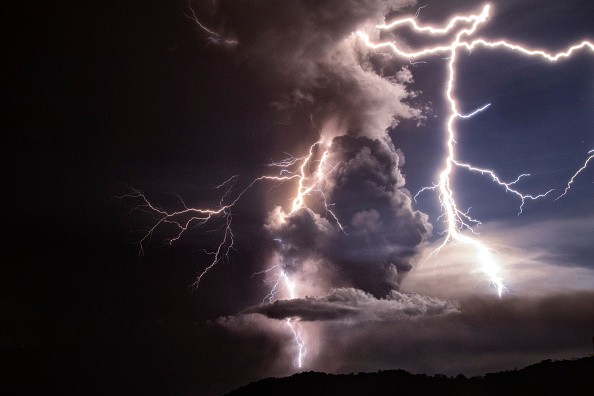Lightning strikes are loud and can easily be spotted. They are violent to the extent of shaking your bones and lighting up the sky.

Lightning-induced Electron Precipitation (LEP)
Led by the University of Colorado Boulder, a new study proposes that these potent events can change the chemistry of Earth's atmosphere. And this could even affect Earth's crucial ozone layer.
Published in the Journal of Geophysical Research: Atmospheres, the outcomes reveals some information about what it means to inhabit a planet rife with lightning.
"You have about 1,800 active thunderstorms across the globe at any given time, generating about 50 flashes per second," said the coauthor of the new study and also Ann and H.J. Smead Department of Aerospace Engineering Sciences assistant professor, Robert Marshall.
He said all that flashing could possibly have a great impact on the atmosphere than scientists believed before. The research depends on a complicated phenomenon referred to as lightning-induced electron precipitation (LEP).
Also Read: It's Alive!: Lightning Played an Important Role in Creating Life on Earth
Shrinking of the Ozone Layer
Anytime lightning strikes, Marshall explained, the bolt shoots off electromagnetic energy's pulse that has the ability to spread all the way around the Earth, into space where that energy forms an interaction with the radiation belts all over our planet, clattering loose some of the trapped electrons. And then it rains downward toward Earth.
He and his team in their new study tracked the three thunderstorms' fallout over the last decade that extends from Nebraska to the Caribbean.
According to their estimations, there is a chance these individual storms have started a chemical chain reaction in the atmosphere, prompting the shrinking of the ozone layer in certain regions by as much as 5%.
Humans have existed with lightning for a long time, so there is a possibility that those fluctuations in ozone doesn't put the safety of people at risk.
But, Marshall said, the findings made by the team signal that - when spread over dozens of storms all taking place at the same time - lightning could have an unexpected great influence on what takes place in the air above our heads.

Lightning Strike
Marshall said: "A single lightning strike has a minor impact on the atmosphere. But over thousands of lightning strikes, it may be much more significant. We don't know yet."
In their new research, Marshall and his team made use of comprehensive computer simulations to follow things happening in the atmosphere following that wild occurrence.
What happened is that as the storms were progressing, the electron energy coming down to Earth started reacting with gasses up in Earth's atmosphere, approximately 30 to 70 miles above the surface. Concentrations of some molecules in the air - hydrogen oxides and nitrogen oxides - shot up nearly at the same time.
Lightning is one of the most important natural phenomena that occur during thunderstorms. Lightening can cause huge changes in its surroundings; it can be observed anywhere in the world, at any time of day or night.
Related Article : Lightning Strike Kills 76 People in India, Including Victims Who Were Taking Selfies
For more news, updates about lightning strikes and similar topics don't forget to follow Nature World News!
© 2025 NatureWorldNews.com All rights reserved. Do not reproduce without permission.





